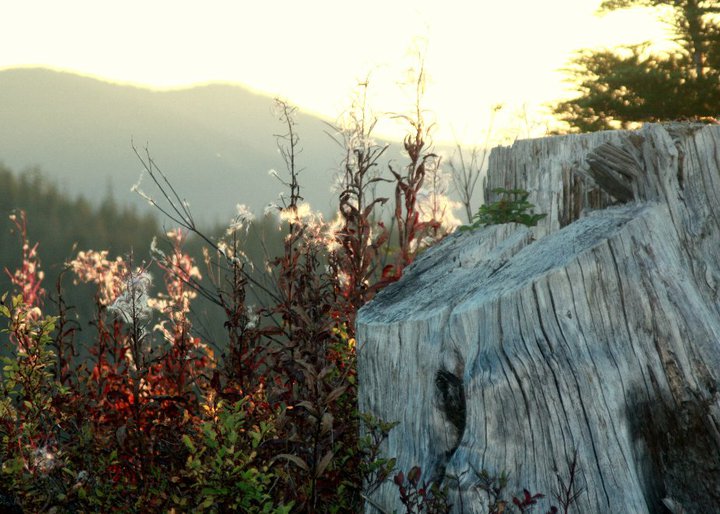The U.S. Forest Service held an open house in Wrangell Wednesday about its plan to transition the Tongass National Forest from old-growth to young-growth logging in about 15 years.
The Forest Service released its draft environmental impact statement for the Tongass Forest Plan Amendment in November. Open house events throughout Southeast Alaska are giving residents a chance to learn more about the plan, ask questions and submit formal comments.
About a dozen Wrangell residents surveyed maps and charts at the open house and talked to Forest Service staff about the proposed transition to young-growth logging on the Tongass.
Plan amendment Project Manager Susan Howle told the group that one of the big trade-offs of moving to young-growth logging would be harvesting timber in areas that are currently off limits. They include areas near streams and beaches, and sections designated for old-growth habitat.
“And in our current plan, our 2008 forest plan, we don’t normally go into those areas for commercial timber,” Howle said. “And so in order to make this work, we have to go into some of those areas, just because that’s where more opportunities for young growth exist.”
Another concern is that even with going into new areas for young-growth timber, there still might not be enough to meet market demand.
“So during the 10- to 15-year timeframe, the transition, we are allowed to offset with old growth. We call it ‘bridge timber.’ So there will still be some old-growth timber harvesting during transition to meet demand,” Howle said. “But that’s how we’re going to make that work. And once we reach the end of the transition, there should be enough young growth to support industry.”
Howle said Southeast residents often ask her how the timber industry will fare under this transition. Will mills re-tool and adapt to young-growth timber?
“I just have to go back to the Secretary of Agriculture’s memo, in that we’re providing the opportunity. We’re providing the timber for that to happen,” Howle said. “But the Forest Service can’t actually dictate who’s going to come in for that. We just have to provide the timber to support something like that.”
A big takeaway for Wrangell residents was that the transition is not likely to have a major impact locally in the near future. Although the transition to young growth would occur over the next 15 years, District Ranger Bob Dalrymple said the Wrangell district is at least 30 years away from having young-growth timber that is suitable for commercial harvest.
The Forest Service is also developing a draft environmental impact statement for the Wrangell Island Timber Sale, which will be entirely composed of old-growth timber. Dalrymple said they wanted to include some young growth in the sale, but the island does not have enough.
Tongass Operations and Planning Staff Officer Rick Abt agreed that Wrangell Ranger District would not see many changes in the near future.
“With the new forest plan amendment, as those young growth stands came online, they would have opportunities to design a timber sale in there to access that,” Abt said. “It increases their opportunity for young growth management and to be able to participate and supply that young-growth wood in the future.”
Several people at the event said they wanted to learn more about the plan amendment’s details before submitting formal comments.
Wrangell resident Susan Wise-Eagle was at the open house. She said she does not want to go back to the heyday of logging, but she thinks some old-growth logging should continue.
“And if it’s done at a reasonable level, I don’t see it as a problem,” Wise-Eagle said. “Having a slow, steady opening with clear cuts, with old growth–that makes for good areas for berry picking, deer hunting and whatnot. So a reasonable sized timber industry with reasonable sized sales, I think, is a good thing for our local economy and for our subsistence.”
Wise-Eagle added that her biggest concern is that logging roads should be left open to provide more access for subsistence hunting and gathering.
A subsistence hearing under the Alaska National Interest Lands Conservation Act (ANILCA) followed the open house. But no Wrangell residents offered testimony about the forest plan amendment’s potential effects on subsistence hunting and fishing.
The Draft Environmental Impact Statement for the Tongass forest plan amendment is open for public comment until Feb. 22.
Click here to learn more about the plan amendment.
Click here to view public comments that have already been submitted.










